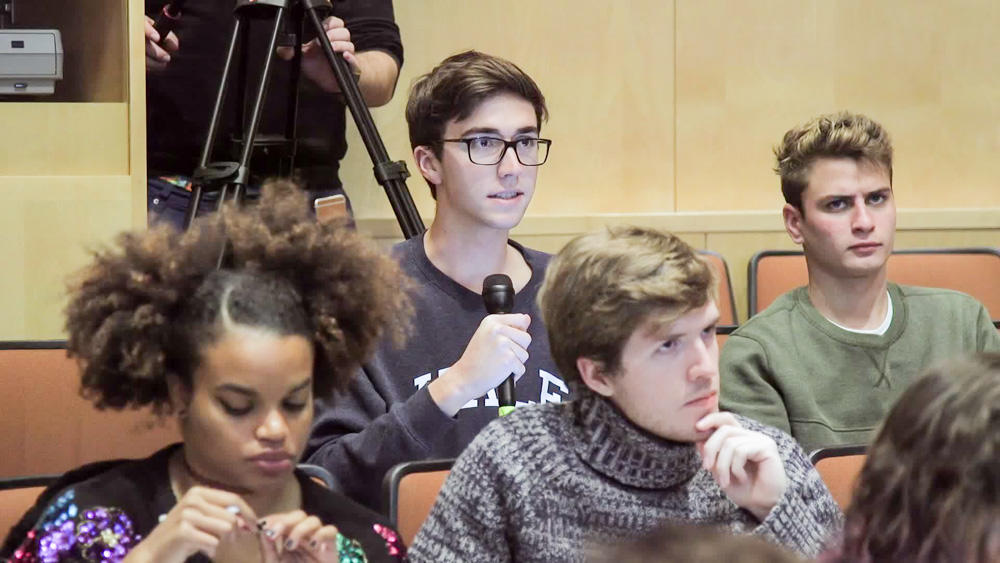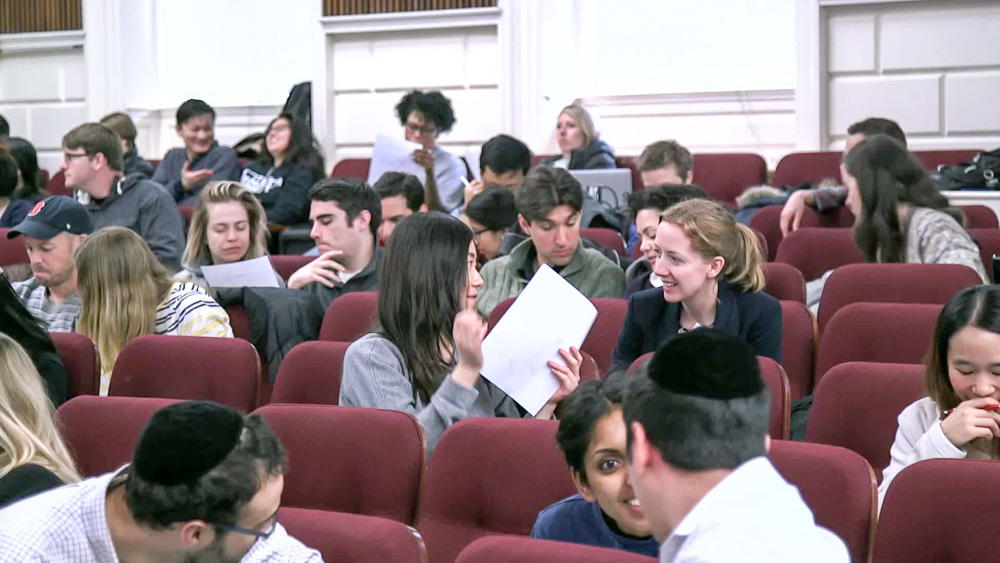Instead of the “I talk, you listen” structure of traditional lectures, mixing up the activities in a lecture course is likely to nurture deeper understanding. Bob Kegan peppers activities throughout his lectures, adding variety and dynamism into what could otherwise be a lengthy, teacher-centered lecture. In this video, Kegan suggests that university instructors think more like bike instructors: It’s not enough to just talk about your content, you must give students a chance to “get on” and try it out.
Regulating the flow of energy in the classroom
Instructor
Robert Kegan, William and Miriam Meehan Research Professor in Adult Learning and Professional Development
Student Group
Graduate
School
Harvard Graduate School of Education
Course
Adult Development
Group Size
~200 students
- Vary the traditional lecture format with student presentations, role plays, debates, or case discussions when appropriate
- Add activities purposefully. Just like you need to practice pedaling in order to learn how to ride a bike, ask yourself, “What types of thinking, speaking, and writing do my students need to practice in this class to achieve my larger learning objectives?”
- Pause your lecture after making a major point and invite students to turn to a neighbor to discuss or to reflect for a few minutes in writing
- Center an engaging activity around a learning-oriented task. Alter the structure of the lesson by having students interpret data, tie ideas together, or apply their learning to a new context.
- According to Prince, activities that engage students in the learning process are associated with higher levels of student engagement (2004)
- Compared to lectures alone, activities promoting active learning are associated with lower failure rates and increased exam performance (Freeman et al., 2014)
- Harvard’s Derek Bok Center for Learning and Teaching recommends “Twenty Ways to Make Lectures More Participatory”
- Carleton College provides a guide for “How to Give Interactive Lectures”
- In “Quick Critical Writing,” a professor shares a “quick write” technique he uses to inject more participation in the traditional lecture




